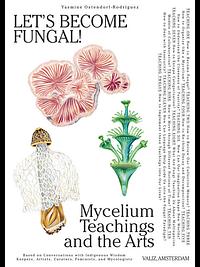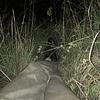Take a photo of a barcode or cover
hopeful
informative
medium-paced
adventurous
challenging
hopeful
informative
reflective
slow-paced
Could be five? Honestly it's given me so much to think about (even if some topics felt a bit repetitive).
A great breakdown of indigenous perspectives, fungi, activism and environmentalism.
A great breakdown of indigenous perspectives, fungi, activism and environmentalism.
challenging
inspiring
reflective
medium-paced
Incredible guide for thinking about your way of being in the world. Modelling oneself after the mutability and non-binary nature of fungi, "living the question," acknowledging the work that's done underground to prepare for the moment of visible change... I really dug all the stuff around timelines and transformation. This understanding of place as relationship and the concept of biocultural diversity (especially the way land lives in the body, that description of the body movements of fishing a particular river). Some of the blanket statements villainizing western medicine were not as much my cup of tea (e.g., antidepressants).
hopeful
informative
inspiring
reflective
It's an interesting book. Somewhere in the middle of it, when the author doesn't seem to know what polyphony is in music, I got a little bit sceptical, which is not a bad thing, this book is not scientific research. Maybe I got a bit disappointed after that as in how I can trust the author on other things that I have no clue about, but the book was still entertaining and passionate about the topic of funga. Now I'm subscribed to their newsletter, which I hope is a good thing
adventurous
hopeful
informative
inspiring
reflective
slow-paced
On a spectrum of fungus books, from philosophical to scientific, it goes Let’s Become Fungal, Braiding Sweetgrass, to Entangled Life. I was hoping for a bit more science, but that was my personal preference.
I can’t gush enough about the beautiful artwork throughout this book! Absolutely stunning soft pastel(?) pieces of fungus and some pictures of the other artwork discussed.
There are a few typos scattered throughout the book, if that’s bothersome to you.
I can’t gush enough about the beautiful artwork throughout this book! Absolutely stunning soft pastel(?) pieces of fungus and some pictures of the other artwork discussed.
There are a few typos scattered throughout the book, if that’s bothersome to you.
I really Loved this book. I have been interested in mycelium for quite a while now, obsessed really. This book scratched my itch and then some. Mycologists and fungi enthusiasts and knowledge keepers are as misunderstood as Fungi itself. I have recommended this book to a dozen friends because it so beautifully investigates and explores and builds a relationship with such an under studied field with so many untold stories and under appreciated scientific, technical, social, and spiritual findings.
I really wanted to like this book, a lot. I love the formatting of it - everything is so intentional and I like how it was designed.
However, I was expecting something more like Gathering Moss by Robin Wall Kimmerer, where you learn about moss and then she ties it to human nature. Here, you don't really learn about fungi, you learn about the people who the author considers embodying a fungal nature. Which is cool, she is uplifting voices that wouldn't normally be in the public eye.
However, as a white woman from Europe writing this, I can't help but wonder if all the people she talked with and interviewed that made it into this book earn a portion of the profits she's making off of their knowledge. I want to give her the benefit of the doubt - no doubt she is doing good work for the planet, artists, and activists. But I still don't really feel a pull to finish this book, because I wanted to learn about fungi more, and I'm unsure about the implications here of using indigenous knowledge to profit off a book when you aren't indigenous.
However, I was expecting something more like Gathering Moss by Robin Wall Kimmerer, where you learn about moss and then she ties it to human nature. Here, you don't really learn about fungi, you learn about the people who the author considers embodying a fungal nature. Which is cool, she is uplifting voices that wouldn't normally be in the public eye.
However, as a white woman from Europe writing this, I can't help but wonder if all the people she talked with and interviewed that made it into this book earn a portion of the profits she's making off of their knowledge. I want to give her the benefit of the doubt - no doubt she is doing good work for the planet, artists, and activists. But I still don't really feel a pull to finish this book, because I wanted to learn about fungi more, and I'm unsure about the implications here of using indigenous knowledge to profit off a book when you aren't indigenous.





